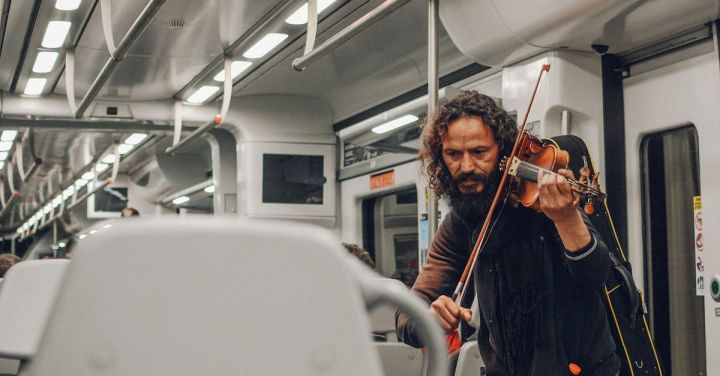Music has a unique ability to transport us to different places and evoke a wide range of emotions. From serene melodies that take us to peaceful landscapes, to energetic beats that make us want to dance, music is a powerful language that can express the ineffable. One motif that has been a source of inspiration for composers throughout history is the sound of trains. The rhythmic chugging, the piercing whistle, and the rumbling of wheels on tracks have all found their way into the symphonies and compositions of countless musicians.
The association between trains and music can be traced back to the early 20th century when the locomotive became a symbol of progress and modernity. As railways expanded across the globe, their presence became ubiquitous, and composers began to incorporate the sounds and imagery of trains into their works. One of the most famous examples is the American composer Aaron Copland’s “Appalachian Spring,” which features a lively section known as the “Hoe-Down.” In this piece, Copland captures the spirit of a train ride through its fast-paced rhythms and jaunty melodies.
Another composer who was enamored with trains was the French impressionist composer Claude Debussy. In his symphonic poem “La mer,” Debussy uses the motif of a train passing in the distance to create a sense of movement and momentum. The distant sound of the train’s whistle is heard throughout the piece, adding an element of mystery and anticipation to the music.
The influence of trains on music is not limited to classical compositions. In the realm of popular music, trains have also played a significant role. One of the most iconic train-themed songs is “Midnight Special,” a traditional folk song that has been covered by numerous artists over the years. The song tells the story of a prisoner longing for freedom, with the train symbolizing his escape to a better life. The rhythmic guitar strumming and the haunting harmonica solos in this song capture the essence of a train journey, creating a sense of movement and adventure.
Trains have also found their way into the world of jazz music. The jazz standard “Take the ‘A’ Train,” composed by Billy Strayhorn and made famous by the Duke Ellington Orchestra, is a tribute to the New York City subway system. The swinging rhythms and vibrant melodies of this song evoke the excitement and energy of a bustling train ride through the city.
In recent years, trains have continued to inspire musicians from various genres. The British rock band Muse released a song called “Dead Inside,” which features the sound of a train in the opening seconds. The train serves as a metaphor for the emotional numbness and detachment that the lyrics explore, creating a powerful and evocative introduction to the song.
Whether it’s classical, folk, jazz, or rock, trains have left an indelible mark on the world of music. From the symphonic grandeur of Copland and Debussy to the raw emotion of folk and rock songs, the sounds and imagery of trains continue to captivate musicians and audiences alike. The rhythmic chugging, the haunting whistle, and the sense of movement that trains represent have become a rich source of inspiration, adding depth and texture to the musical landscape.
So, the next time you find yourself listening to a symphony or humming a tune, take a moment to appreciate the role that trains have played in shaping the music we love. From the conductor’s whistle to the symphony, trains have become an integral part of the musical journey.
